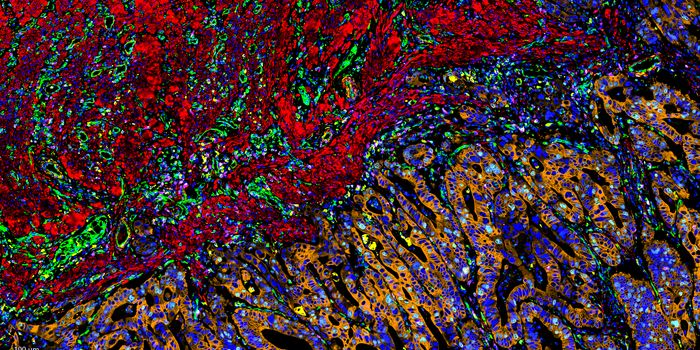Why Cancer is Unavoidable Two-Thirds of the Time
Here’s a perplexing and unsettling reality: People who do their best to adopt a healthy lifestyle, including limiting exposure to unhealthy environments, can reduce their cancer risks, at best, by 40 percent. Cancer can still strike for the other 60 percent of the time, despite our most conscious health efforts.
This conundrum has troubled cancer biologists for years. By facing it squarely again, scientists at the Johns Hopkins School of Medicine say the root of the problem rests in DNA copying mistakes in cells. In two-thirds of the time, cancer arises due to genetic typos caused by errors in DNA replication.
"It is well-known that we must avoid environmental factors such as smoking to decrease our risk of getting cancer. But it is not as well-known that each time a normal cell divides and copies its DNA to produce two new cells, it makes multiple mistakes," said Cristian Tomasetti, assistant professor of biostatistics at the Johns Hopkins Kimmel Cancer Center and the Johns Hopkins Bloomberg School of Public Health.
Random errors in a cell’s replication machinery are nothing new, and they’re not all bad. In fact, these so-called “mistakes” are responsible for the wide diversity of traits in any species, including humans. At the same time, some of these glitches also confer malignancy in cells. But the full extent of these cellular typos in driving cancer growth is underestimated, says the Hopkins team.
"These copying mistakes are a potent source of cancer mutations that historically have been scientifically undervalued, and this new work provides the first estimate of the fraction of mutations caused by these mistakes,” said Tomasetti.
Together with Bert Vogelstein, one of the most recognized figures in cancer biology, Tomassetti and colleague Lu Li, analyzed 32 types of cancer. In particular they looked for patterns of mutations that seemed to be driving the growth of these cells. They also developed a mathematical model that predicts the odds for the source of these mutations. For example, they calculated that for pancreatic cancer to arise, 77 percent of mutations are due to random DNA copying mistakes, while the rest of the mutation source comes from environmental factors and genetic history.
In a many other cancer types, the team found the same recurring pattern: random DNA mistakes account for a significant percentage of the critical mutations that contribute to cancer development. In fact, when analyzed across all 32 cancer types, random DNA copying errors account for 66 percent of the risks, while 29 percent is attributed to environmental exposure, and the remaining 5 percent is due to heredity.
If the body’s DNA replication machinery can be thought of as typing out a 20-volume book, Vogelstein says it’s only inevitable that typographical errors will occur and accumulate.
"You can reduce your chance of typographical errors by making sure you're not drowsy while typing [akin to environmental exposure] and that your keyboard isn't missing some keys [akin to inherited factors]," said Vogelstein. "But typos will still occur because no one can type perfectly. Similarly, mutations will occur, no matter what your environment is, but you can take steps to minimize those mutations by limiting your exposure to hazardous substances and unhealthy lifestyles."
Additional sources: Johns Hopkins Medicine









